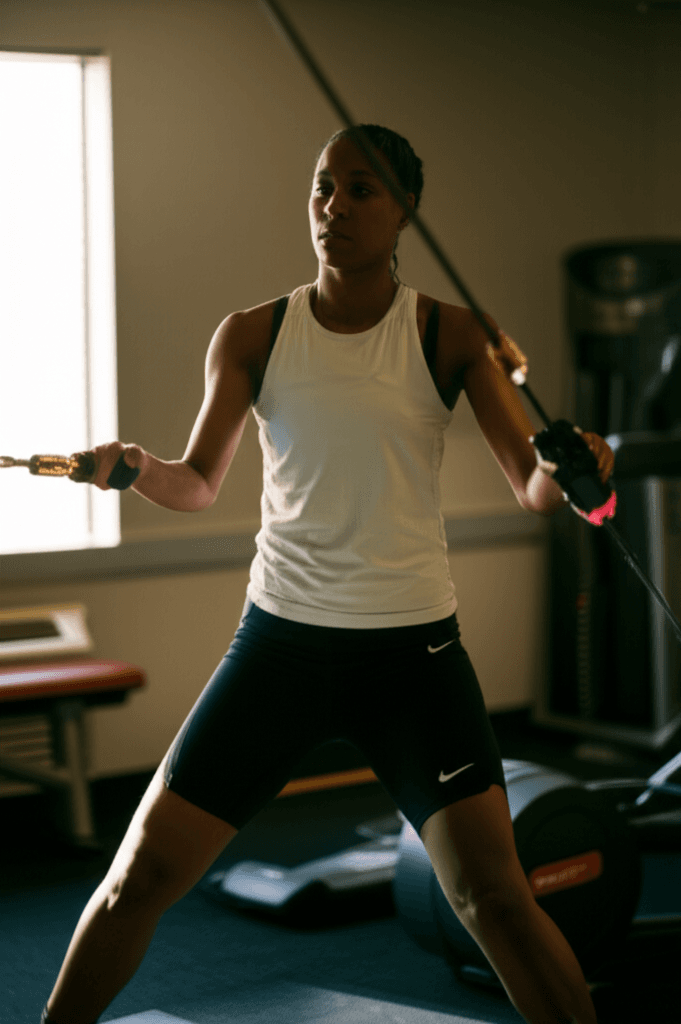WNBA players face significant challenges in maintaining their peak physical condition while navigating the demanding travel schedule of a professional basketball season. The condensed season, frequent travel, and varying access to facilities require a strategic and adaptive approach to fitness, nutrition, and recovery.

The Demands of the WNBA Schedule
The WNBA season is intense, with a significant number of games packed into a relatively short window. For example, the 2025 season features 44 games, an increase from 40 in 2024, without an extension of the season length. This compact schedule means less time for recovery between matchups and minimal opportunity to ease back in after minor injuries. Many players also compete overseas during the WNBA offseason, leading to year-round play with virtually no break for their bodies, which increases fatigue and the risk of chronic injuries.
Frequent flights, inconsistent sleep patterns, and changing time zones due to travel can further wear down the body, weakening reaction time and muscle coordination, making players more prone to injuries, especially during back-to-back games.

Adaptive Training Regimens
WNBA teams and their athletic trainers employ creative solutions to ensure players can continue their strength and conditioning programs while away from their home facilities. The focus shifts from muscle growth to activation and retention, with intentional exercises tailored for the road.
Strength and Conditioning on the Go
- Bodyweight and Functional Training: Players often rely on exercises that utilize their own body weight and focus on functional movements crucial for basketball, such as squats, lunges, push-ups, and core exercises like dead bugs and Russian twists. These can be performed in various spaces, accommodating the limitations of hotel gyms or other available areas.
- Consistency and Intentionality: Despite changing locations, the goal is to maintain the consistency of the strength and conditioning program. Athletic trainers, like Andrea Hayden of the Minnesota Lynx, emphasize that quality work can happen anywhere. Post-game lifts often focus on long eccentric, isometric, and full-range movements for muscle activation and retention.
- Listen to the Body: Players are encouraged to listen to their bodies and adjust workouts accordingly. Some may take off days completely during the season to prioritize rest and recovery.
Cardio and Agility
Basketball is a high-intensity, intermittent sport requiring significant aerobic and anaerobic capacity. While game play itself provides much of the conditioning during the season, players also incorporate various cardio exercises:
- HIIT Workouts: High-Intensity Interval Training (HIIT) is a popular choice due to its effectiveness and adaptability, as it can be done almost anywhere.
- Court Drills: When court access is available, players engage in specific basketball drills focusing on their skills, such as shooting and post-game moves, which inherently provide conditioning.
- Cardio Machines: Elliptical machines and Airdyne bikes are also used for cardiovascular workouts, particularly during preseason.

Crucial Role of Nutrition
Proper nutrition is paramount for WNBA players to fuel their bodies for performance and aid in recovery, especially with the challenges of road travel.
- Carbohydrate-Focused Fueling: Given the high-energy demands of basketball, carbohydrates are a primary source of fuel. Players aim for 7-10 grams of carbohydrates per kilogram of body weight daily, found in grains, cereals, starchy vegetables, fruits, and fruit juices. The focus is on fueling before workouts or games and then refueling afterward.
- Protein for Repair: Protein intake is essential for muscle repair and recovery. WNBA players, including vegetarian athletes like Aaliyah Edwards, prioritize protein-rich meals and snacks such as protein bars, trail mix, and portable blenders for smoothies.
- Hydration is Key: Maintaining optimal hydration is critical. Players are encouraged to drink plenty of water and utilize sports drinks during high-intensity workouts lasting an hour or more to replace electrolytes and prevent dehydration.
- Strategic Eating: Planning meals and snacks is vital to avoid unhealthy options while traveling. Players might pack healthy snacks, research restaurants near hotels, and opt for familiar menu items at well-known chains. Some players, like Sue Bird, adjust their diets in-season to avoid foods that might cause minor allergies or slow them down.

Prioritizing Recovery
Recovery is as vital as training, if not more so, for WNBA players on the road, particularly with the condensed schedules that increase injury risk.
- Sleep: Sufficient sleep (8-9 hours per night) is considered one of the most effective forms of recovery, facilitating muscle repair, immune function, and cognitive performance. However, challenging travel schedules with late-night flights and early morning practices often disrupt sleep patterns. Players try to establish consistent sleep routines and utilize tools like sleep masks and earplugs.
- Active Recovery and Modalities: Players incorporate various recovery strategies, including yoga, meditation, massage therapy, and cryotherapy. Active recovery like Peloton or long walks can also serve as mental breaks. Using devices like Firefly on legs can stimulate blood flow and prevent swelling after flights.
- Hot and Cold Therapy: Hydrotherapy, such as steam rooms, hot tubs, and cold tubs, is utilized to alleviate muscle tightness, remove lactic acid, and promote overall body recovery.
- Addressing Travel Fatigue: The league has begun to acknowledge the impact of travel on player safety and recovery. While commercial flights have been the norm, causing issues like increased COVID-19 risk and fatigue, the WNBA announced in May 2024 plans to provide full-time private charter flights, recognizing the transformational impact on player rest and safety. This move aims to protect players who are increasingly gaining visibility and facing security concerns.
The commitment of WNBA players and their support staff to innovative training, meticulous nutrition, and disciplined recovery protocols ensures they remain at the top of their game, even when constantly on the move.







